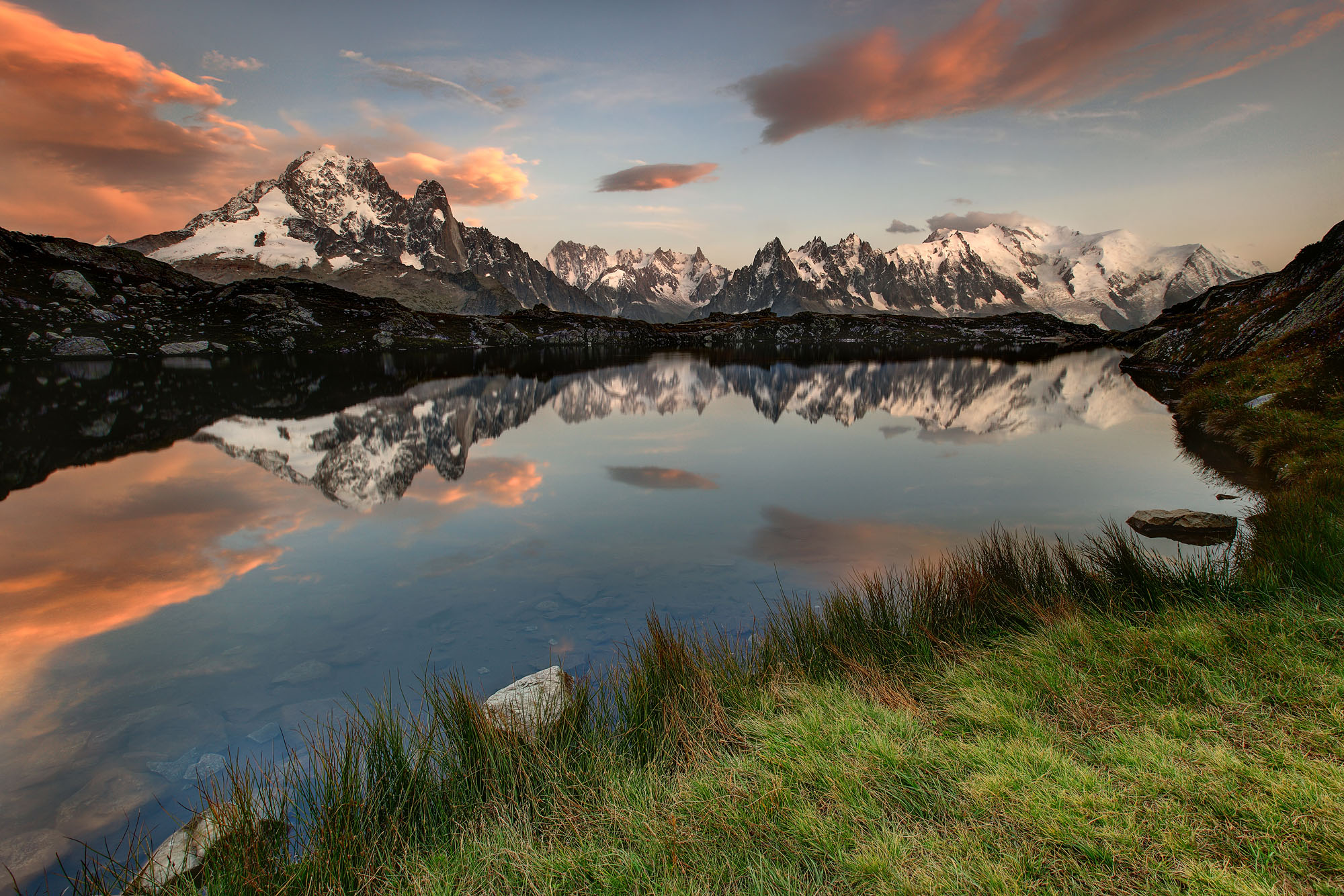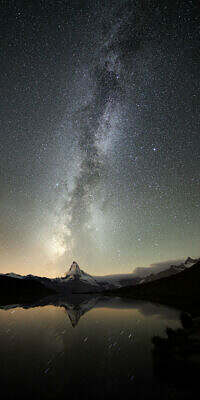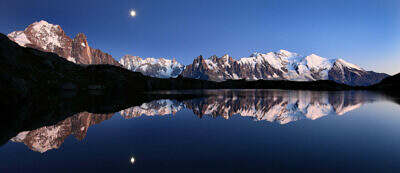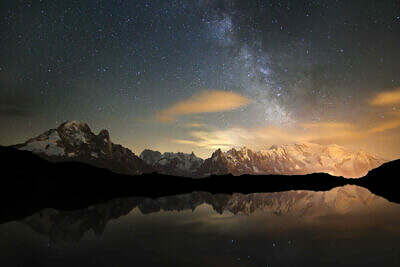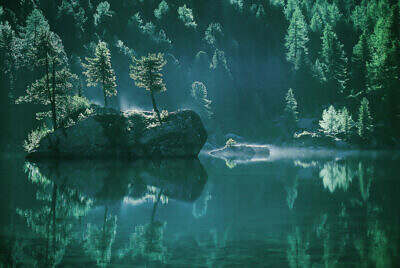Lac de Cheserys in the Aiguilles Rouge above Chamonix offers spectacular views of the Mont Blanc massif. At the end of a stormy day the sunset dramatically illuminates foehn clouds indicating high wind speeds at height. However, for a fleeting moment the wind calmed down just enough to allow for a glassy reflection of the snowy mountain range in this beautiful alpine lake.
-
The Mont Blanc massif in a foehn storm
Elements of Storm
- Stellar Sunshine
- Moonrise Symphony
- Storm Reverb
- The Dawn of the Nightglory
- Dreamscape

